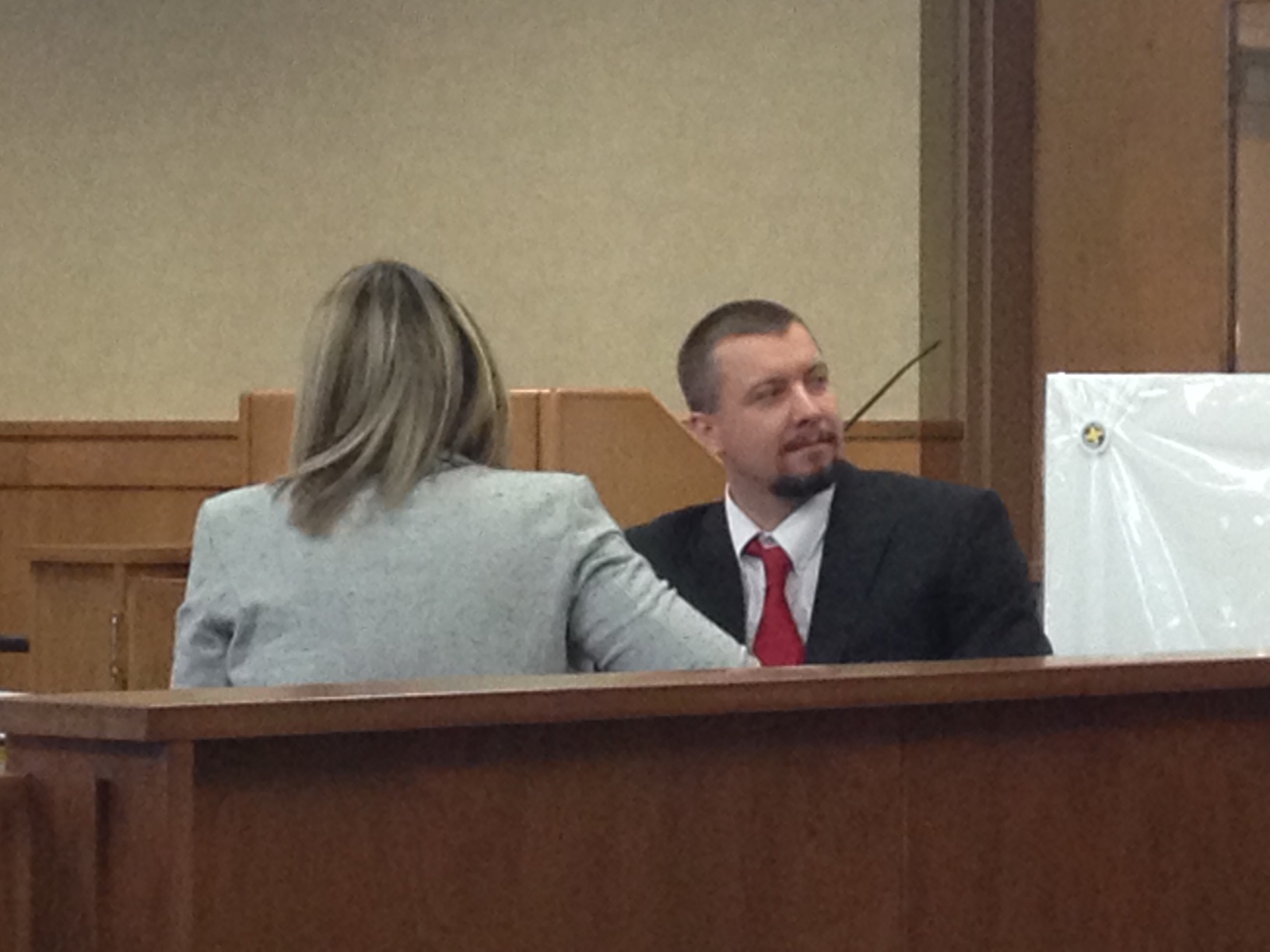
OAKFIELD, Maine — An attorney for a Houlton man convicted of murdering an Oakfield couple and then setting their home on fire nearly five years ago appealed his case to the Maine Supreme Judicial Court on Tuesday.
Defense attorney Tina Heather Nadeau of Portland argued that Aroostook County Superior Court Justice E. Allen Hunter erred when he denied a motion to exclude testimony from an eyewitness who identified convicted murderer Matthew Davis at the crime scene. She also argued that Hunter erred in denying Davis’ request to present expert testimony refuting the reliability of eyewitness testimony, and that there was insufficient evidence to support the convictions.
Assistant Attorney General Donald Macomber argued against the appeals, telling members of the Law Court that the murder conviction should be upheld.
Hunter sentenced Davis, 37, to life in prison in February 2017 after he was convicted of shooting to death Michael Kitchen, 51, and Heidi Pratt, 49, in the early morning hours of Sept. 23, 2013, in the Oakfield home they shared. Police said he then set the house ablaze and fled in a pickup truck he stole from the home. A jury also convicted Davis of four counts of arson, three counts of theft and one count of aggravated criminal mischief related to a crime spree he went on the day of the killings. Davis was represented at trial by defense attorney Daniel Lilley of Portland, who has since died, and Attorney Amber Tucker of Portland.
Nadeau claimed Wednesday that Hunter should have excluded an eyewitness identification of Davis from William Lloyd, a neighbor of the murder victims. Lloyd testified at trial that he was awakened about 4 a.m. on the day of the murders by the sound of gunshots. He testified that he saw a man with dark hair in a buzz cut with wide eyes drive Kitchen’s truck out of the couple’s garage through the closed door but that he did not recognize him that morning. The police never showed a photograph of Davis to Lloyd, but he said he saw a booking photograph of Davis following his arrest that was published on the Bangor Daily News Facebook page the day after the murders. When a state police detective came to Lloyd’s house to show him a photo array the next morning, Lloyd told him he’d seen the social media photo of Lloyd and was “100 percent certain” that the person he had seen in the photograph was the person he had seen the day before in the truck. He knew Davis from a motorcycle class they took together years before, but told police he had not immediately recognized him in the truck because Davis’ hair was long when he last saw him.
Nadeau told the Law Court that jurors overly relied on eyewitness identification testimony and gave it too much weight at trial. She said that since 1979, more than 2,000 studies have emerged talking about the “pitfalls of eyewitness identification.”
Also during trial, Hunter had denied a defense motion to introduce expert witness testimony from Dr. Brian Cutler regarding eyewitness identification. Cutler would have testified that certain factors associated with the conditions under which Lloyd viewed Davis and the nature of eyewitness identification “may have influenced the accuracy of the descriptions, identifications and the confidence of the eyewitnesses…,” according to court documents.
Hunter had excluded Cutler’s testimony because notice of his appearance before the court was “clearly late,” and the justice was “not persuaded that this is in the nature of rebuttal evidence,” according to court documents. Macomber argued that Davis’ attorneys did not notify the state that they intended to call Cutler until the first day of the trial, after four days of jury selection had taken place.
In their questioning of Nadeau, justices made note of this. Chief Justice Leigh I. Saufley also said that previous law court decisions had made clear that “late disclosed witnesses …must be looked at cautiously.”
Macomber rebutted any arguments against Lloyd’s identification of Davis, telling the justices that nothing about it was “unreliable.” Macomber said that Lloyd had stepped in front of the truck that Davis had stolen from the crime scene that morning and “locked eyes” with the convicted murderer for four seconds.
“His sole focus was trying to figure out who was in that truck,” he told the justices.
It was ample time to get an apt physical description of the man, according to Macomber.
“He provided a description to the police accurately before he saw the pictures on the Bangor Daily News Facebook page,” he added.
There is no timetable under which the justices must issue their decision.







